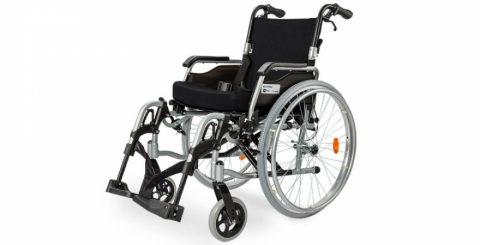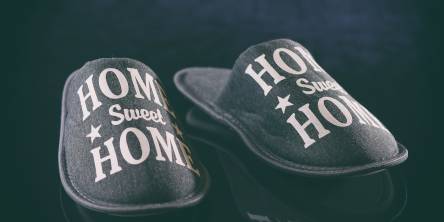7 Simple Tips for Keeping Your Wheelchair in Top Shape

Every wheelchair has a story. Wheelchairs are used by people all over the world for a variety of reasons. Some have illnesses that necessitate temporary use, while some have permanent injuries and disabilities that make mobility impossible without a wheelchair. Either way, people with mobility problems are better off using the chair. Not only can it improve their quality of life, wheelchairs also afford people the comfort and freedom to live out their lives the way they want to.
Wheelchairs are available in a variety of forms, each designed to fit a specific need or want. There are folding wheelchairs, wheelchairs designed for use on sand, on snowy terrain, and some can even allow the user to dance and play sports. What used to symbolise suffering is now a badge of independence.
Wheelchairs, like most machines, require regular upkeep to ensure good working condition. People need to eat healthy food to ensure good health, and so do wheelchairs need constant maintenance to ensure their users get to enjoy the benefits of improved mobility for years to come. The little things can quickly snowball into a big thing, so it’s important to arrest the causes while they’re still easily avoidable. Here are a few maintenance tips so you can enjoy your wheelchair for a long time.
Know thy wheelchair
Nobody knows your wheelchair like you do. After repeated use, you slowly become acquainted with the sounds it makes, the way the seat hugs your back, the specific feeling when you push it around. You can immediately hear any new sounds, no matter how low. And you know what it can and can’t take on. The wheelchair becomes an extension of your person.
If anything feels different, the way the wheels squeak, the tightness of the backrest, then you should probably have it checked out. Like I said before, the small things can quickly add up, and catching them at the source can stop them from turning into a big problem.
Steer clear of stairs and curbs
If you’re in an unfamiliar place, it’s probably best to stay away from curbs and staircases. We’re familiar with soap operas, and one of their favorite tropes is the villain pushing someone down the stairs. While it may seem melodramatic, it is know that people have accidentally fallen down a curb or a flight of stairs.
Not only can it be dangerous for you, it also might seriously damage your wheelchair. A broken spoke, or a loose screw is all it takes for your wheelchair to become a hazard.
Stay away from obstacles
While wheelchairs are designed for durability, they’re not as adaptable as a 4-wheel drive vehicle. Try to stay away from puddles, as the mud and water can get clogged up in the bearings. It’s also an invitation for rust to form, making pushing much more difficult. If you want to keep your wheelchair fluid and rust-free, wipe the wheels off after contact with water (e.g. rain, snow).
Be vigilant and always scan ahead for debris that you might encounter such as garbage, rocks, broken glass and dog poop. You do not want your wheels to come into contact with something that might destabilise the wheelchair and affect its motion.
Check for cracks
Most people use their wheelchairs almost every day, and a little wear and tear is inevitable. Always check the wheelchair for wear such as little cracks, especially in high-stress areas such as the wheels and the cross brace. A small crack can quickly become a threat to your safety once it expands and forms more cracks. The maintenance required may be as simple as a small repair to as drastic as total frame replacement.
Examine the wheels
A wheelchair is just a regular chair without the wheels. Always check the tires’ condition, and have them replaced when they’re not filling out completely or if the tread becomes loose or cracked. Make sure the brakes are in good condition and easily engaged.
Keeping it tight
Regularly inspect the wheelchair for loose bolts and screws. Furthermore, if you hear or feel something fall off, stop immediately and have your wheelchair checked. Do not replace damaged or worn out bolts with one of a lower strength grade. If possible, source the exact same bolt that needs to be replaced.
Lubricate often
If you own a collapsible wheelchair, make sure that it folds and opens effortlessly. The mechanism that allows it to be collapsible needs to be lubricated at least twice a year—more so if you live in a wet climate.
All wheelchair joints and pivot points also need to be lubricated. Be sure to use a good lubricant that can offer resistance to water and corrosion.
Similar Articles
Halitosis, sometimes known as foul breath, affects millions of individuals worldwide and can cause humiliation, influencing everyday interactions and confidence.
In the modern world, maintaining good health often feels like a constant challenge. Between busy lifestyles, sedentary habits, and lack of motivation, many people find it difficult to stay consistent with exercise, diet, or wellness practices.
Learn how UV toothbrush sanitizers use UV-C light to kill 99.9% of bacteria, viruses, and fungi—backed by science for better oral health.
In the past, the experience of soaking in a hot tub or relaxing in a sauna was something reserved for spas, health clubs, or luxury retreats
Learn practical strategies for nurses to advance careers while maintaining patient care, managing time, and supporting well-being in today’s fast-paced healthcare.
Learn 6 key benefits of a juice cleanse, from boosting energy and hydration to clearer skin, easier digestion, and healthier eating habits.
Discover 5 simple ways to enjoy green tea daily for better taste, more nutrients, and lasting wellness benefits for your body and mind.
Discover how house slippers support foot health indoors—combining warmth, protection, and support—with insights from podiatrists and real‑world studies.
How whole-body donation creates a lasting impact, advancing medical education, research, and future healthcare breakthroughs.









